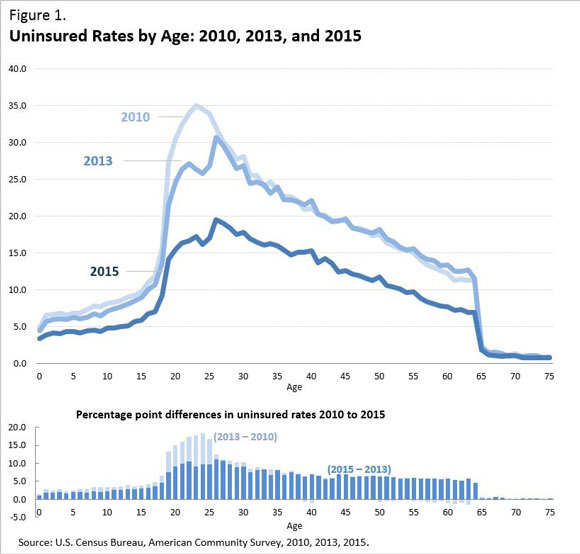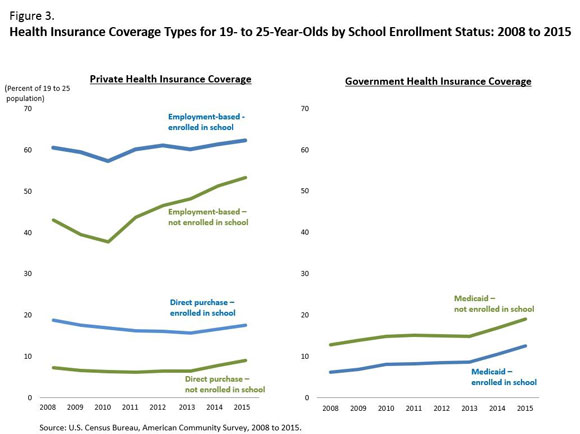
An official website of the United States government
Here’s how you know
Official websites use .gov
A .gov website belongs to an official government organization in the United States.
Secure .gov websites use HTTPS
A lock (
) or https:// means you’ve safely connected to the .gov website. Share sensitive information only on official, secure websites.
-
//
- Census.gov /
- Newsroom /
- Census Blogs /
- Random Samplings /
- Another Look at Health Insurance Coverage Rates for Young Adults
Another Look at Health Insurance Coverage Rates for Young Adults
Another Look at Health Insurance Coverage Rates for Young Adults
In the last decade, young adults (ages 19 to 25) gained health insurance coverage more than any other age group (Figure 1). In 2010, young adults had the highest uninsured rate compared with every other age group — with about one-third of them lacking health insurance. Since then, their uninsured rate has dropped dramatically, with one in six of young adults lacking health insurance coverage in 2015. How did this group improve so much?
The change occurred in two waves: between 2010 to 2013 and 2013 to 2015. As shown in the report, Health Insurance Coverage of Young Adults Aged 19 to 25: 2008, 2009, and 2011, young adults benefited from the federal law change in 2010 when adult children under age 26 could now be covered by their parents’ private health insurance plans. Prior to this change, only young adults enrolled in school could be included on their parents’ plans. Then, after 2013, further provisions in the health care law expanded health insurance coverage options for everyone, including young adults not already covered through their parents’ private plan.
So let’s look at the numbers. In 2010, the uninsured rate for young adults enrolled in school was about one-half that of their counterparts, who were not enrolled, 20.3 percent compared with 41.9 percent (Figure 2). Between 2010 and 2013, the uninsured rate improved 10 percentage points for young adults not enrolled and 3 percentage points for those enrolled in school. Between 2013 and 2015, both young adult groups, enrolled and not enrolled, experienced sharp declines, though the uninsured rate for enrolled young adults remained lower than that of those not enrolled (10.0 percent and 20.6 percent).
So what kind of health insurance did young adults get? Looking at Figure 3, we can see that between 2010 and 2013, almost all of the changes in health insurance coverage were concentrated in employment-based health insurance, most likely through a parent’s employer. The rates of employment-based health insurance for young adults not enrolled in school increased by 10 percentage points compared with 3 percentage points for those enrolled in school. After 2013, the increased health insurance coverage of young adults, both enrolled and not enrolled in school, mirrored that of all working-age adults, gaining coverage through direct purchase and Medicaid, as well as making further gains in employment-based health insurance.
Share
 Yes
Yes
 No
NoComments or suggestions?


Top



